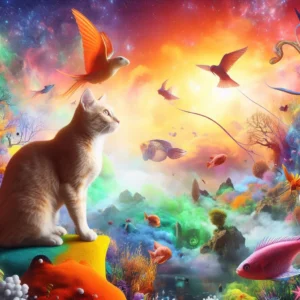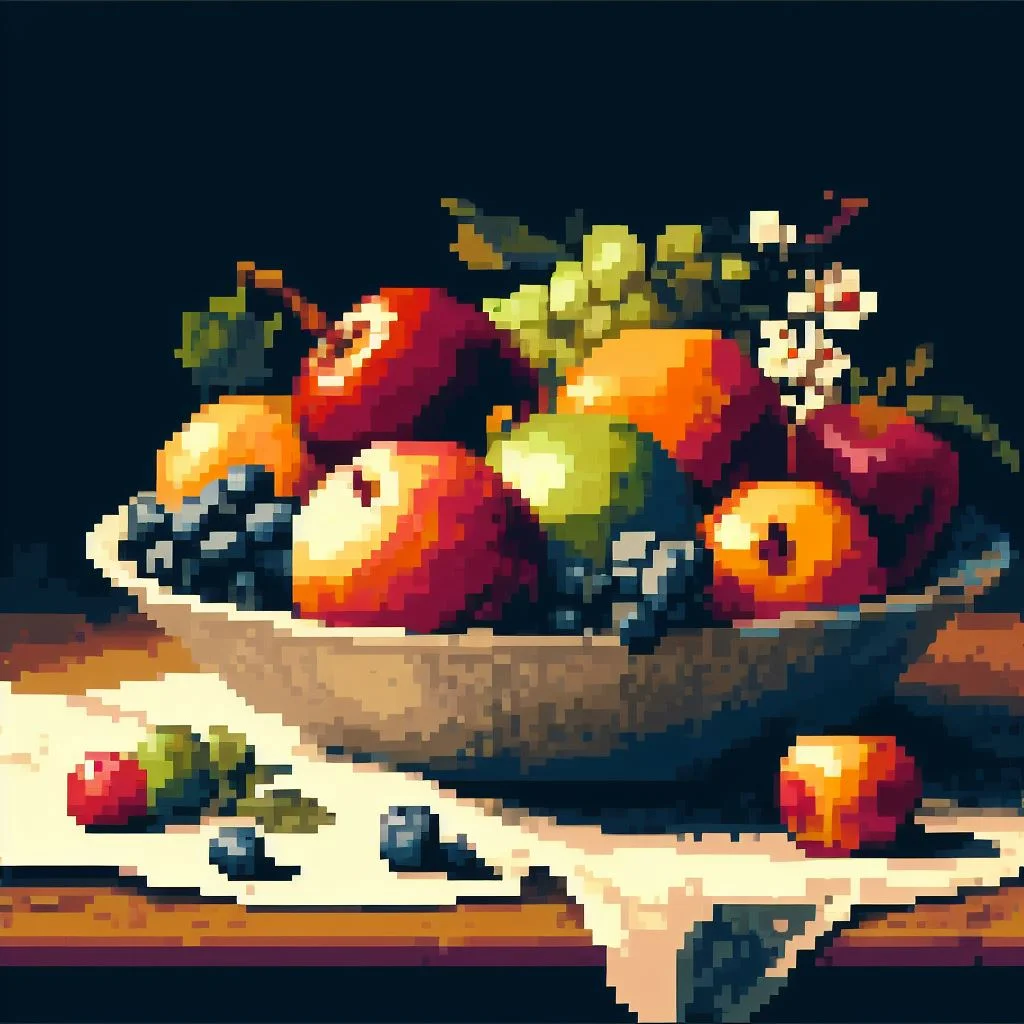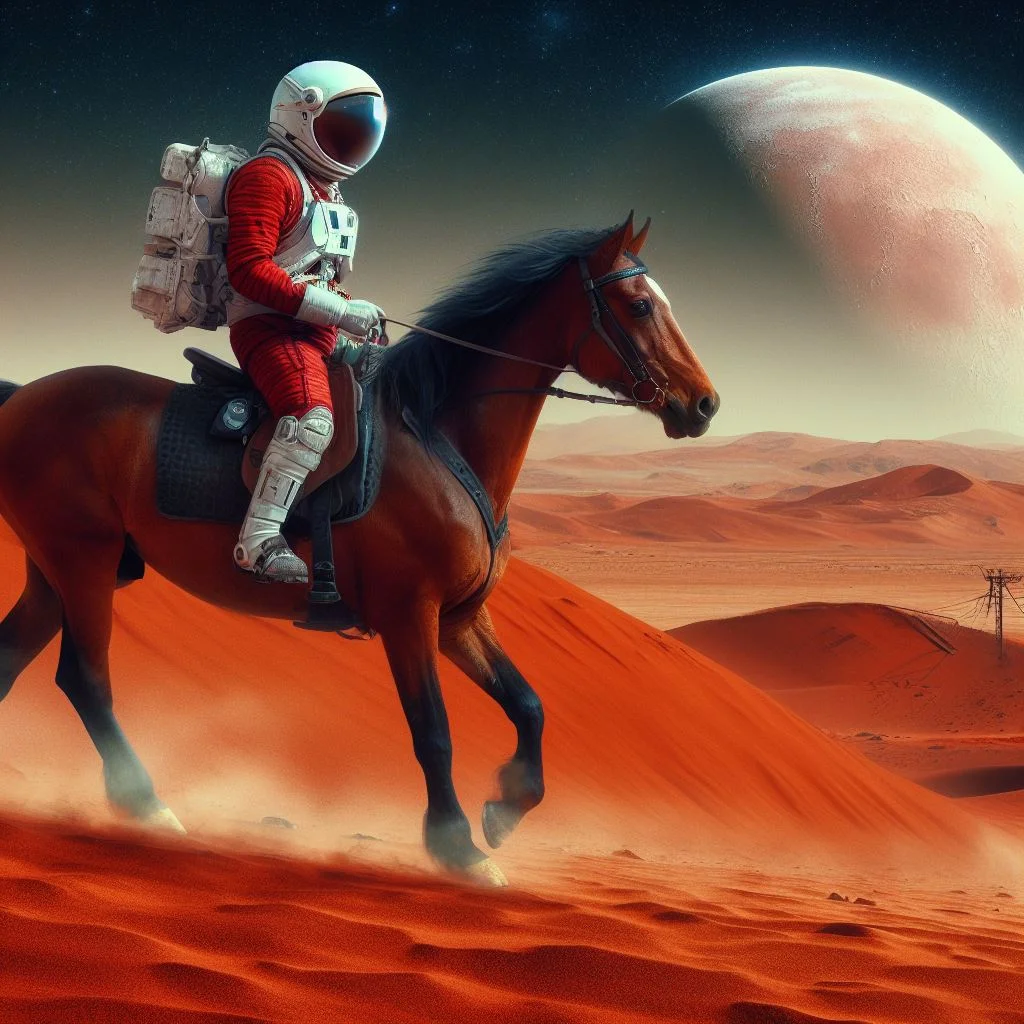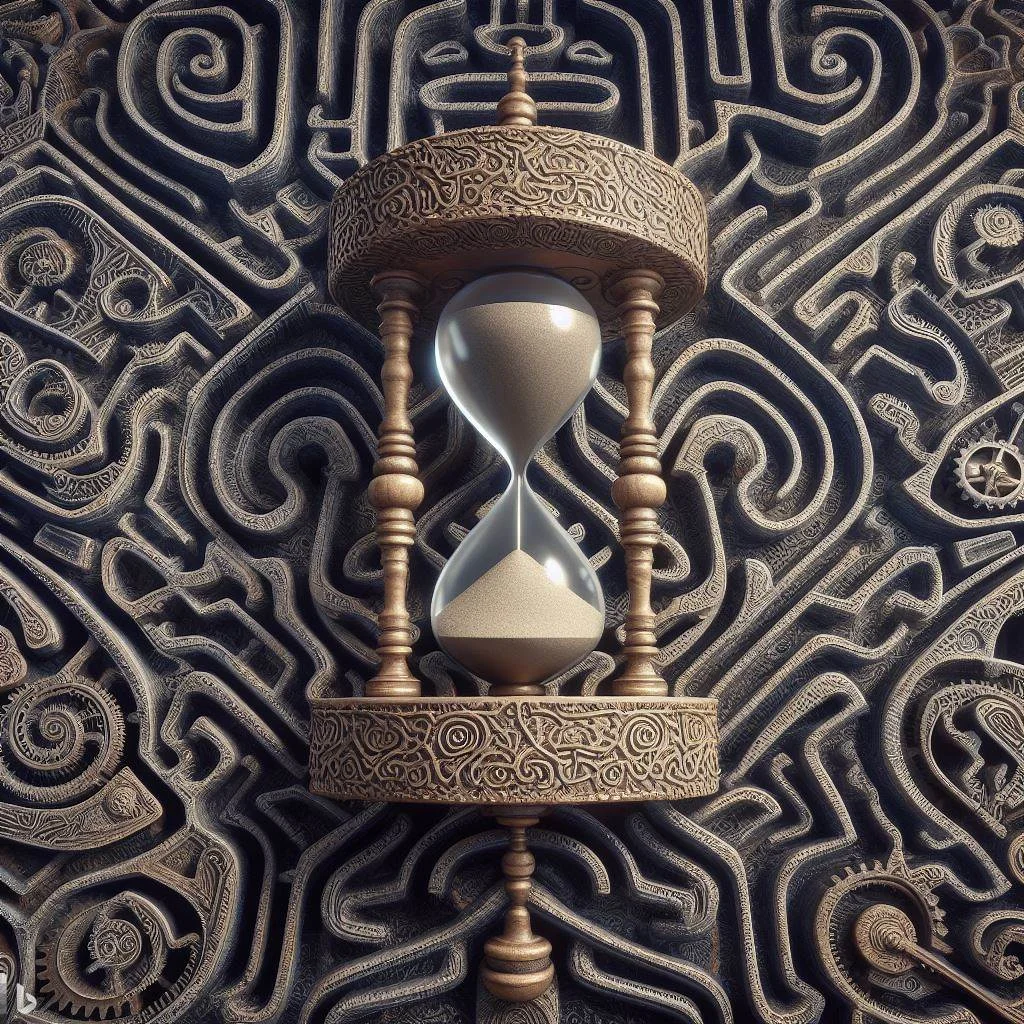AI image generation represents an exciting new frontier in art and creativity. With the right prompts, these models can produce stunning original images brimming with emotion, concepts, and artistic flair. In this comprehensive guide, we’ll explore the world of AI art prompts to help unlock your creative potential.
What is an AI Art Prompt?
An AI art prompt is text instructing image generation models like DALL-E or Midjourney to create a visual representation. They describe the desired subject matter, style, composition, mood, and other elements to depict.
For example, prompts can specify:
- Subject matter: “An astronaut in a red spacesuit is riding a brown horse across Martian dunes”
- Style: “Da Vinci style portrait of a robot”
- Composition: “A lone house on a hill overlooking a lake at sunset”
- Mood: “A dreaming cat exploring a vibrant landscape of floating fish and birds”

Prompts leverage the capabilities of text-to-image models to turn language into visual art. Crafting engaging prompts is key to producing captivating images that realize your creative vision.
Writing Effective Prompts
Compelling prompts help AI models generate more detailed, interesting, and aesthetically pleasing images. Here are tips for writing better prompts:
- Specify concrete details – Prompts should provide lots of visual specifics for the model to depict rather than being abstract. For example, “an astronaut in a red spacesuit is riding a brown horse across Martian dunes” rather than just “astronaut on Mars”.
- Set the scene – Establish the setting, surrounding environment, atmosphere, and context. This gives the AI more to work with in constructing a cohesive image.
- Add style information – Supplying an art genre or movement like “impressionist”, “art deco”, or “cubist” produces images in recognizable styles. Can also name specific artists.
- Limit scope – Overly complex prompts can confuse AI systems. Keep to a centralized theme and reasonable level of detail. You can generate multiple images to tell a complex story.
- Strike an emotion – Inject tone through descriptive words like “gloomy”, “cheerful”, “serene” etc. Or specify emotional facial expressions.
- Consider composition – Use terms like “symmetrical”, “blurry background”, and “aerial view” to guide the overall image layout.
- Avoid ambiguity – Vague prompts leave too much open to interpretation by the AI. Provide concrete imagery and modifiers.
Start with simple prompts and build up details. Evaluate results and refine wording to better convey your vision. Impactful prompts both provide strong direction while still allowing some creative latitude.
Prompt Engineering
Prompt engineering involves strategically crafting and iterating on prompts to produce better quality and more target images from AI. Prompt engineering tactics include:
- Using brackets – Brackets isolate optional details the AI can choose to include or not, giving it creative leeway. Ex: “A river [flowing gently] through a forest.”
- Trying variants – Test different phrasings of the same core prompt to see which works best. Ex: “cyberpunk city” vs “futuristic city with neon lights”
- Adding context – Context cues help the AI render appropriate relationships between prompt elements. Ex: “A daisy flower resting gently in a child’s hand.”
- Splicing prompts – Combine parts of existing prompts to create new hybrid concepts. Ex: “Astral astronaut [in a meadow on Earth]”
- Reducing ambiguity – Remove or replace tentative words like “maybe”, “perhaps”, and “some kind of” with more definitive language.
- Guiding step-by-step – Break long prompts into numbered steps so the AI generates a sequence of connected images.
- Steering aesthetics – Insert stylistic terms like “cinematic”, “8-bit pixel art”, “retro”, and “chiaroscuro” to refine image atmospherics.
Prompt engineering is an iterative process of testing prompt variations and honing wording to achieve a desired visual outcome. Save prompts that produce quality results to reuse as baseline templates.
Best 5 Free Prompt Engineering Courses & Resources 2023
Types of Prompts
AI image generators support a diverse range of prompt categories including:

Literal Prompts:
Literal or straightforward prompts describe exactly what you want the AI to depict. For example:
- A still-life painting of fruit in a bowl, 8-bit style
- An astronaut walking on the moon with the Earth visible
- A horse running across a meadow
These prompts provide clear direction with details for the AI to visualize. They work well for representational art.
Emotional Prompts:
Emotional prompts aim to evoke a certain feeling, mood, or tone through descriptive language. For instance:
- A majestic wolf howling sadly at the moon
- An abandoned robot sitting alone with a forlorn expression
- A joyful baby giggling while playing with bubbles
Words like “majestic”, “forlorn”, and “joyful” convey emotive qualities to translate into visuals.
Metaphorical Prompts:
Metaphorical prompts use symbolic language and cultural metaphors that the AI interprets visually. For example:
- An hourglass flowing with stardust instead of sand
- A heart-shaped balloon floating away into a stormy sky
- A person carrying the weight of the world on their shoulders
These prompts portray abstract concepts through vivid symbolic imagery.
Story Prompts:
Story prompts describe a narrative scene or sequence for the AI to depict. For instance:

- A cowboy sitting by a campfire under the stars with his horse grazing nearby
- A robot couple ice skating together in a futuristic cyberpunk city
- A witch brewing a magical potion in her gothic tower
These prompts set an imaginative scene and implied story.
Style Prompts:
Style prompts generate images mimicking a specific art genre, movement, technique, or artist. For example:
- Impressionist landscape in Monet style
- Cubist portrait in the style of Picasso
- Surrealist dreamscape reminiscent of Dali
Referencing styles provide helpful creative constraints.
Negative Prompts
The negative prompt is a powerful technique that instructs and tells AI image generators what not to include in a generated image. It lets you specify unwanted elements. This narrows down the images produced to better match what you want.
For a More Detail Explanation Check Out Our Stable Diffusion Negative Prompts: A Comprehensive Guide with Practical Examples
Subject Matter Ideas
The subject matter you prompt helps set the tone and concept you want to convey. Here are some idea starters:
People:
- Portraits
- Character archetypes (wizard, warrior, astronaut, etc.)
- Everyday scenes (diner, beach, city street)
- Emotive moments (loneliness, joy, curiosity)
Nature:
- Landscapes (forest, desert, sea)
- Animals (real or mythical)
- Flowers/plants
- Night sky
Futuristic:
- Sci-fi vehicles, cities, technology
- Alien beings and planets
- Robots
- Utopian/dystopian civilizations
Fantasy:
- Mythical creatures
- Fairy tales and folklore
- Heroes and villains
- Magical realms
Arts and Culture:
- Famous imagery from art history
- Sculptures, architecture, design objects
- Books, film scenes
- Pop culture characters
Browse relevant image feeds or content libraries for inspiration. Unique crossovers and mashups between concepts help stimulate new visualizations.
Prompt Samples and Inspiration
Here is a sampling of fun, thought-provoking prompts to kickstart your creativity:

- An astronaut riding a galloping horse across the surface of Mars
- A cheerful baby dragon splashing playfully in a pond
- A majestic owl perched on a lamppost in an abandoned futuristic cityscape
- A surrealist watch with floating clock hands and melting numbers
- An octopus with butterfly wings soaring gracefully through the sky
- A contemplative robot monk raking a zen rock garden
- A still-life painting of exotic alien fruit with tentacles and star-speckled peels
- A gigantic steampunk robot emperor sitting on an elaborate mechanical throne
- A flower with fractal petals that fade into an infinite universe
- A cute puppy playing with flowers happily
Let these wildly imaginative examples stir your creative juices! Mix and match visual concepts. Browse other prompts shared online or in communities. Soon unique prompt ideas will flow more freely.
Prompt Guidance By Genre
Tailoring prompts based on the desired art genre or medium also yields fitting results:
Portraits: Specify facial expressions, pose, attire, era, or culture. Ex: “An intense self-portrait in charcoal drawing style”
Still Life: List objects, lighting, arrangement, and style. Ex: “A classical still life oil painting of fruit in a bowl with dramatic chiaroscuro lighting”
Landscape: Describe terrain, features, weather, landmarks, and composition. Ex: “Panoramic landscape of waterfalls and mountains towering above a misty forest”
Conceptual: Communicate messages, themes, and feelings through symbols. Ex: “A labyrinth made of interlocking gears, with an hourglass at the center”

Pop Art: Depict modern commercial items and pop culture icons. Ex: “Pop art poster of a flashy sports car in Andy Warhol style”
Matching prompt style to artistic genre helps AI generate images suited to the medium. Tailor prompts to your goals.
Do’s and Don’ts For Better Results
Through trial and error, you’ll develop an intuition for crafting effective vs. ineffective prompts. Some general do’s and don’ts:
Do:
- Use concrete, vivid descriptive language
- Have a clear focal point
- Limit scope to one central theme
- Specify lighting, mood, composition
- Add context where helpful
- Indicate artistic styles for consistency
Don’t:
- Overcomplicate the prompt
- Use tentative ambiguous language
- String together disjointed elements
- Fall back on generic terms like “cool”, “awesome”
- Assume AI understands context or symbolism without explanation
Prompt writing develops through practice. Strive for imaginative but unambiguous language conveying your creative vision.
Common Prompt Pitfalls
Be aware of some common prompt pitfalls that can result in lackluster or nonsensical images:
- Ambiguous concepts – Using subjective, abstract language leaves much open to the AI’s interpretation. Ex: “a spiritual ritual”, “a psychedelic experience”
- Assumed knowledge – Don’t assume AI comprehends context, relationships, or significance without clearly specifying in the prompt. Ex: “a proud father”, “a foreboding premonition”
- Conflicting or contradictory elements – Contradictory concepts confuse the AI since they portray clashing realities. Ex: “a rainy desert”, “a happy funeral”
- Scope overload – Trying to cram too many disparate details into one prompt rarely ends well. Keep prompts simple and cohesive.
- Unclear style – Making a prompt highly specific but omitting a clear style reference risks odd mashups. Ex: “An astronaut riding a horse”, but no mention of realism, cartoon, etc.
With practice, you’ll learn to avoid prompts that are likely to trip up image generators. Pay close attention to the AI’s interpretation of your wording.
Prompt Crafting Exercises
Sharpen your prompt writing skills with these engaging exercises:
- Metaphor Madlibs – Take a common metaphor like “blowing off steam” and visualize it literally. Ex: “A tea kettle with a storm cloud blowing out of its spout.”
- Mashup Sparks – Fuse two disparate concepts like “jellyfish” and “hot air balloon” together in a single prompt. Ex: “A jellyfish pilot flying a bulbous hot air balloon across the sky.”
- Story Sparks – Create a short narrative prompt around an evocative concept like “fountain of youth” or “magic compass”.
- Style Transfer – Reimagine a famous painting or artistic style applied to an unexpected subject. Ex: “Van Gogh’s Starry Night landscape, but set on Mars.”
- Panel Storyboarding – Craft a sequence of prompts to visualize a step-by-step story across multiple panels.
Flexing your prompt muscles trains your mind to transform concepts into conjuring words. Brainstorm playfully without self-judgment to tap into creative flow.
Curating Inspiring Image Collections
Maintaining organized collections of quality AI art can bolster inspiration:
- Sort generatively – Group images by the prompt components or themes they relate to like “robots”, and “fantasy landscapes”.
- Tag purposefully – Add descriptive tags about mood, style, and composition to make images searchable.
- Name meaningfully – Give images and collections titles that summarize key traits rather than default filenames.
- Browse mindfully – Periodically review images to analyze what prompt elements successfully translated into aesthetically pleasing art.
- Remix creatively – Allow past images to spark cross-breed prompt ideas combining favorite elements in new ways.
- Cite ethically – If publicly sharing AI generations, provide model and prompt credits to maintain creative transparency.
Thoughtfully archived images become rich seeds for cultivating future prompts and honing your process.
Advanced Prompting Techniques
As you gain more experience with AI art generators, consider trying more advanced prompting methods:
Chaining / Blocks
This structures long prompts into logical steps or blocks for AI to follow sequentially. For example:
Block 1: A wide-angle view of a futuristic cyberpunk bar with holograms and glowing neon lights. Block 2: Many shady-looking characters socialize within the bar. Block 3: A noir-style detective in a trenchcoat enters the bar.
Chaining guides AI through multi-stage worldbuilding.
Sampling / Regurgitating
This feeds the AI’s existing images to remix elements from or mimic a visual style. For example:
“Make something that looks like this, but as a new character:” + sample image
Sampling helps reproduce consistent styles.
Embedding
Here you provide example images within the text prompt to depict the elements described. For instance:
“A character that looks like [this sample image], walking through a landscape that looks like [this sample image]”
Embedding allows bringing specific visual references into prompts.
Collaborative Co-Creation
In this technique, you generate an initial image from one AI and then feed it into another AI to iteratively enhance and refine the art.
For example: Midjourney > Stable Diffusion > Midjourney
Co-creation leverages strengths across models to improve results.
Hypernetworks
With this approach, you pass AI art into a secondary “hyper network” optimized to iteratively evolve images by removing undesirable artifacts and strengthening composition.
For instance: Midjourney > Hypernetwork > Output
Hypernetworks can optimize technical quality and correct flaws.
Experiment with these advanced tactics once comfortable with basic prompting. They provide more generative control and collaboration. But focus first on honing fundamental prompt writing skills.
Assessing Prompt Results
Assess the visual results of prompts through an artistic eye:
- Does the image match the intended theme and details provided?
- Is the composition balanced and aesthetically appealing?
- Does it convey the desired mood and style?
- Is every major element of the prompt represented?
- Are there any unwanted artifacts or irregularities?
Identify where the AI accurately translated your creative vision versus areas for improvement. Refine and retest prompts to incrementally improve.
How to Find Your Prompt Style
With experimentation, you’ll intuitively develop prompt writing patterns that unlock your unique interests and perspective:
- Do you tend to favor detailed literal prompts or conceptual poetic prompts?
- What themes and subject matter resonate with your life experiences and identity?
- Does your language reveal influences from your cultural background and creative communities?
- Do certain moods, color palettes, or composition styles draw you in?
- What visual metaphors speak to your hopes, values, and imagination?
Reflect on what prompts satisfy versus bore you. Follow these threads to your distinctive prompt voice.
Conclusion
While AI capabilities are rapidly advancing, in many ways prompts represent your most direct channel for injecting human creativity into the generative process.
Prompt crafting exercises the creative facets fundamental to all art forms, like imagination, visualization, communication, aesthetics, and storytelling. Just as learning to write short stories strengthens foundational fiction skills, thoughtfully honing prompts develops core creative muscles.